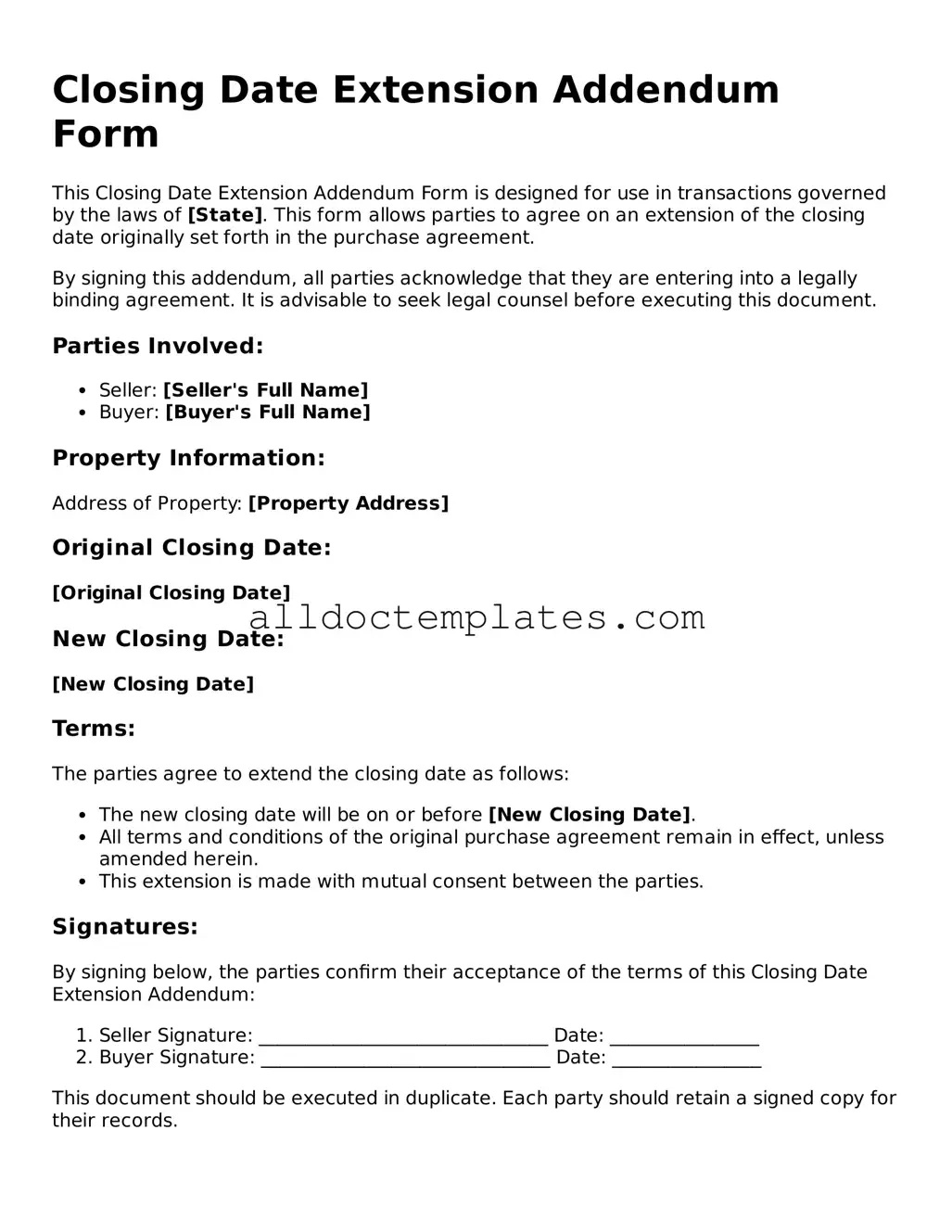Closing Date Extension Addendum Form
This Closing Date Extension Addendum Form is designed for use in transactions governed by the laws of [State]. This form allows parties to agree on an extension of the closing date originally set forth in the purchase agreement.
By signing this addendum, all parties acknowledge that they are entering into a legally binding agreement. It is advisable to seek legal counsel before executing this document.
Parties Involved:
- Seller: [Seller's Full Name]
- Buyer: [Buyer's Full Name]
Property Information:
Address of Property: [Property Address]
Original Closing Date:
[Original Closing Date]
New Closing Date:
[New Closing Date]
Terms:
The parties agree to extend the closing date as follows:
- The new closing date will be on or before [New Closing Date].
- All terms and conditions of the original purchase agreement remain in effect, unless amended herein.
- This extension is made with mutual consent between the parties.
Signatures:
By signing below, the parties confirm their acceptance of the terms of this Closing Date Extension Addendum:
- Seller Signature: _______________________________ Date: ________________
- Buyer Signature: _______________________________ Date: ________________
This document should be executed in duplicate. Each party should retain a signed copy for their records.
Please consult with a qualified attorney to ensure compliance with all relevant laws and regulations.
